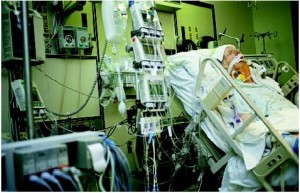Minnesota has declined to make public its list of recommended projects for the first round of broadband stimulus funding until Washington announces the lucky recipients beginning in early November. Sure, many other states have released their prioritized lists of applicants for a $7.2 billion jackpot. And sure, the secretive nature of the process seems at odds with the high level of transparency that was promised to accompany the even higher level of stimulus funding.

A cursory review by the Freedom Foundation of Minnesota of the projects under consideration, however, indicates there’s plenty of reasons to avoid public scrutiny.
Leading the list of dubious projects is a $5.2 million proposal by the city of Minneapolis to provide laptops or iPod Touches to “underserved” residents, courtesy of taxpayers. Of course, many taxpayers would no doubt appreciate receiving an iPod Touch themselves and there’s no indication of how handing out iPods and laptops would help create or save jobs, or spur economic recovery.
It could be coming some day to a neighborhood near you. Proponents tout it as a model that can be replicated in any of the 3,200 public housing authorities across the U.S. The supposedly innovative model program is designed to address the digital divide between public housing residents and the rest of the city. The Minneapolis proposal targets nearly 5,000 households in public housing high rises that are apparently unable to receive the city’s own public WiFi service. Residents who “graduate” from the first level (reportedly seven hours) of the city’s so-called Broadband University (BBU) “will be eligible to receive their choice of wifi-enabled devices–laptops or handheld iPod Touches,” according to the proposal’s executive summary. The plan estimates the number of trainees at 6,300 in what could be called the BBU Class of 2010.
Despite bureaucratic reluctance to provide access to the complete documents, most proposals’ executive summaries are on line at www.broadbandusa.gov, providing a revealing glimpse into one of the largest stimulus spending programs, purportedly aimed at expanding access to broadband services nationwide and creating jobs building Internet infrastructure.
A review shows stimulus funding would be used to duplicate and compete with broadband services already available from private providers in some areas. Taxpayers would pay several times the going commercial rate due to the remote locations. And millions of tax dollars would be used to raise “broadband awareness” and encourage “sustainable broadband adoption” in urban and rural areas.
Other highlighted proposals include a $2.8 million University of Minnesota proposal that makes the bold claim that it will eliminate “the disparity in broadband awareness and use” and “close the Digital Divide” in four Twin Cities poverty zones.
One county’s website reveals how some local officials pick up where Washington leaves off in obscuring the true cost of stimulus spending to taxpayers. Despite requesting $33 million in broadband stimulus funding, Lake County states “no taxpayer funds will be pledged to fund the network”.
Staff at the Minnesota Department of Commerce recently evaluated the proposals under their purview and submitted the state’s funding recommendations to the U.S. Commerce Department’s National Telecommunications and Information Administration (NTIA) to meet an October 14th deadline. State officials declined our request to review the proposals and the state’s broadband stimulus funding recommendations, citing state law.
“This is a matter of transparency in government, plain and simple,” said Annette Meeks, CEO of the Freedom Foundation of Minnesota. “We were told that the record-setting stimulus spending would be accompanied by record-setting transparency. Numerous other states have released their recommendations. It’s not too late to do the right thing and open up the books in Minnesota.”
The federal government has received 2,200 applications for broadband stimulus funding nationwide totaling $28 billion. Reviewers at the Commerce and Agriculture Departments are expected to announce the recipients on a rolling basis beginning on November 7th through the end of December.
COMMENTS
Please let us know if you're having issues with commenting.